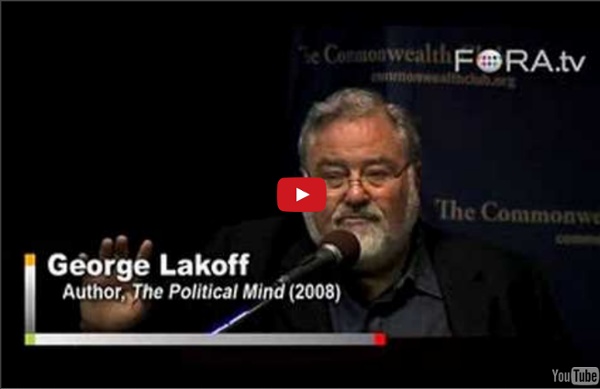Idea Framing, Metaphors, and Your Brain - George Lakoff

Keith Chen: language that forecasts weather — and behavior
By Keith Chen How are China, Estonia and Germany different from India, Greece and the UK? To an economist, one answer is obvious: savings rates. Germans save 10 percentage points more than the British do (as a fraction of GDP), while Estonians and Chinese save a whopping 20 percentage points more than Greeks and Indians. Economists think a lot about what drives people to save, but many of these international differences remain unexplained. In a recent paper of mine, I find that these countries differ not only in how much their residents save for the future, but also how their native speakers talk about the future. Keith Chen: Could your language affect your ability to save money? In late 2011, an idea struck me while reading several papers in psychology that link a person’s language with differences in how they think about space, color, and movement. In a nutshell, this is precisely what I found. Rain is likely this weekend. It will likely rain this weekend. What does this mean?
5 examples of how the languages we speak can affect the way we think
Keith Chen (TED Talk: Could your language affect your ability to save money?) might be an economist, but he wants to talk about language. For instance, he points out, in Chinese, saying “this is my uncle” is not as straightforward as you might think. In Chinese, you have no choice but to encode more information about said uncle. “All of this information is obligatory. This got Chen wondering: Is there a connection between language and how we think and behave? While “futured languages,” like English, distinguish between the past, present and future, “futureless languages” like Chinese use the same phrasing to describe the events of yesterday, today and tomorrow. But that’s only the beginning. Featured illustration via iStock.
Related:
Related:



